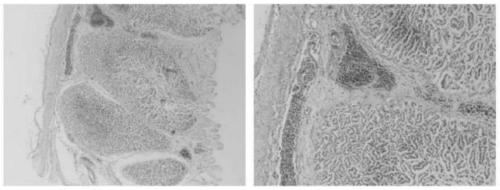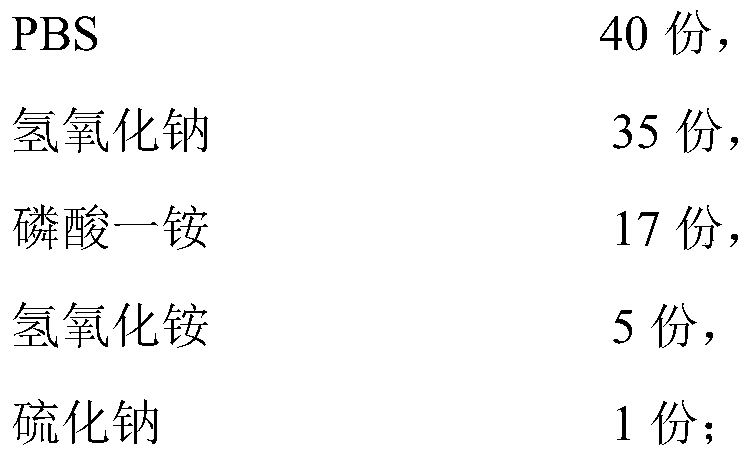Hepatic extracellular space information acquisition method
A technology of information collection and liver cells, which is applied in the field of information collection in the extracellular space of liver cells, can solve the problems of inability to study the whole liver comprehensively and have many influencing factors, and achieve the effect of realizing dynamic evaluation and avoiding invasive and invasive examination
- Summary
- Abstract
- Description
- Claims
- Application Information
AI Technical Summary
Problems solved by technology
Method used
Image
Examples
Embodiment 1
[0061] The method for collecting information on the extracellular spaces of the liver in this embodiment includes the following steps:
[0062] (1) Pretreatment: cleaning the sample, then marking the sample, and standing it for use;
[0063] (2) Initial inspection: Paraffin-embedded and HE-stained the sample obtained from the pretreatment in step (1), wherein the thickness of the section after paraffin-embedded was 1 μm, and the specific operation of HE staining was as follows,
[0064] Select the improved hematoxylin stain solution containing ethanol for staining treatment for 4min,
[0065] Choose pure water to rinse for 2 minutes,
[0066] Select the hydrochloric acid immersion 5min that mass concentration is 1%,
[0067] Choose pure water to rinse again for 2 minutes,
[0068] Choose an improved alkaline solution to immerse for 5 minutes,
[0069] Choose pure water for the third rinse for 6 minutes,
[0070] Choose improved eosin dyeing solution for dyeing treatment f...
Embodiment 2
[0084] This embodiment is improved on the basis of Embodiment 1, the difference is:
[0085] In the above-mentioned method for collecting information on the extracellular space of the liver, the puncture operation described in step (1) is specifically to take the patient in the supine position or the inclined position, and use B-ultrasound to outline the patient's liver on the skin surface , and determine the two points farthest apart, then take the center point along the connection line formed between the two points, and draw a circle with the center point as the center and a distance of 2cm-3cm as the radius, where the arc of the circle Take the three points connected to form a triangle, and then use alcohol cotton balls for disinfection. After disinfection, use a biopsy needle to prick the liver tissue.
[0086] In the above-mentioned method for collecting information on the extracellular space of liver cells, the information card described in step (1) is specifically an Io...
Embodiment 3
[0111] With reference to embodiment 1 and embodiment 2, and introduce respectively normal people (normal group) and suffer from the patient of liver disease (hepatic fibrosis group) to test,
[0112] The results are shown in Table 1:
[0113] Table 1 Comparison of hepatic extracellular space between normal group and liver fibrosis group
[0114] group Number of cases fECS liver fibrosis group 32 35.7%±6.8% normal group 32 26.5%±6.2%
[0115] get conclusion:
[0116] Sensitivity: 100%,
[0117] Specificity: 75%,
[0118] False Positive Rate: 25%,
[0119] False Negative Rate: 0%,
[0120] Youden Index: 0.75
[0121] Positive likelihood ratio: 4.0,
[0122] Negative Likelihood Ratio: 0.0,
[0123] Positive predictive value: 80%,
[0124] Negative predictive value: 100%.
[0125] In addition, in the above experiments, the slice pictures of liver fibrosis group and normal group are as follows: figure 1 shown.
[0126] Summary discussion: ...
PUM
| Property | Measurement | Unit |
|---|---|---|
| Thickness | aaaaa | aaaaa |
| Thickness | aaaaa | aaaaa |
Abstract
Description
Claims
Application Information
 Login to View More
Login to View More - R&D
- Intellectual Property
- Life Sciences
- Materials
- Tech Scout
- Unparalleled Data Quality
- Higher Quality Content
- 60% Fewer Hallucinations
Browse by: Latest US Patents, China's latest patents, Technical Efficacy Thesaurus, Application Domain, Technology Topic, Popular Technical Reports.
© 2025 PatSnap. All rights reserved.Legal|Privacy policy|Modern Slavery Act Transparency Statement|Sitemap|About US| Contact US: help@patsnap.com



